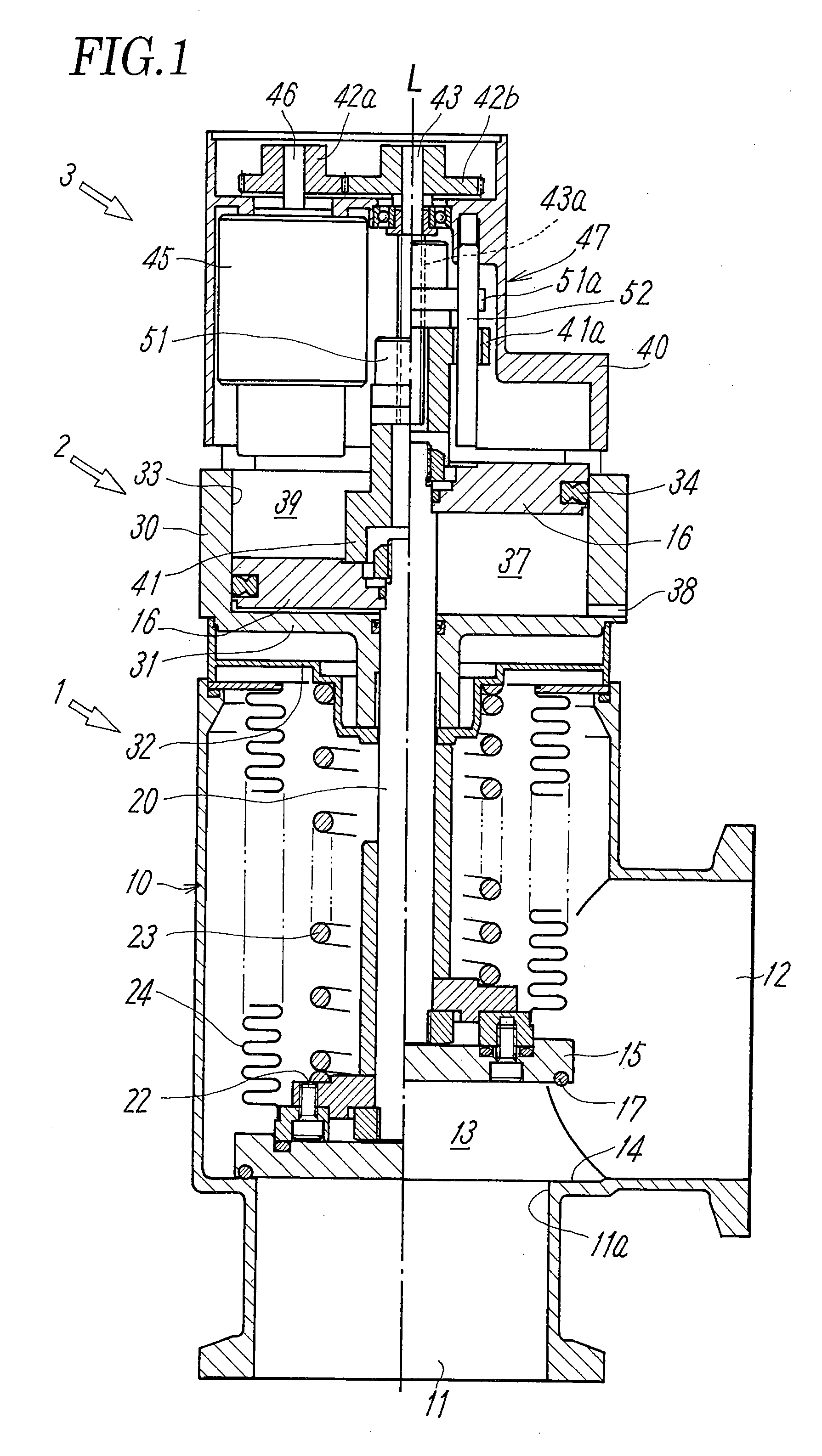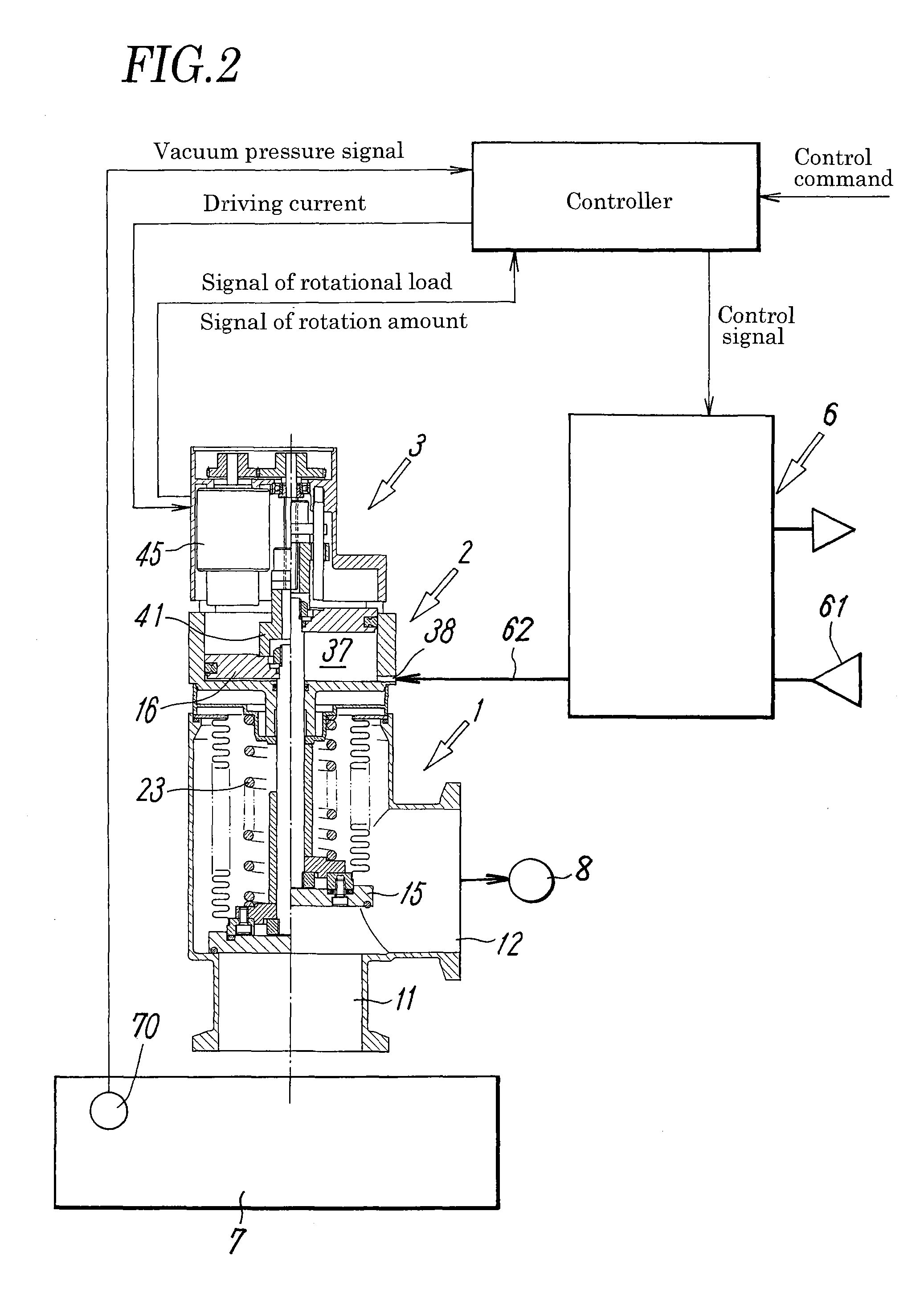Vacuum pressure regulation system
a vacuum pressure and regulation system technology, applied in fluid pressure control, process and machine control, instruments, etc., can solve the problems of inability to achieve the desired exhaust velocity, inability to maintain the desired exhaust velocity of the vacuum chamber, and inability to reduce the pressure in the vacuum chamber, etc., to achieve accurate control, simplified structure, and accurate announcement
- Summary
- Abstract
- Description
- Claims
- Application Information
AI Technical Summary
Benefits of technology
Problems solved by technology
Method used
Image
Examples
Embodiment Construction
[0031]FIG. 1 illustrates a typical embodiment of a vacuum pressure regulating valve employed in a vacuum pressure regulation system according to the present invention, and FIG. 2 illustrates a general configuration of the vacuum pressure regulation system including the vacuum pressure regulating valve.
[0032]The vacuum pressure regulating valve includes a valve main body 1 having a valve member 15 that opens and closes a flow path 13 between a first and a second main ports 11, 12, a fluid pressure driving unit 2 having a piston (pressure-receiving member) 16 that opens and closes the valve member 15, and a valve aperture adjusting unit 3 that sets the aperture of the valve member 15. The vacuum pressure regulating valve is connected, as shown in FIG. 2, to an electromagnetic valve unit 6 that supplies and discharges a pilot fluid to and from the fluid pressure driving unit 2, and to a controller that receives a control command and information of a load of an electric motor 45 to be d...
PUM
 Login to View More
Login to View More Abstract
Description
Claims
Application Information
 Login to View More
Login to View More - R&D
- Intellectual Property
- Life Sciences
- Materials
- Tech Scout
- Unparalleled Data Quality
- Higher Quality Content
- 60% Fewer Hallucinations
Browse by: Latest US Patents, China's latest patents, Technical Efficacy Thesaurus, Application Domain, Technology Topic, Popular Technical Reports.
© 2025 PatSnap. All rights reserved.Legal|Privacy policy|Modern Slavery Act Transparency Statement|Sitemap|About US| Contact US: help@patsnap.com



